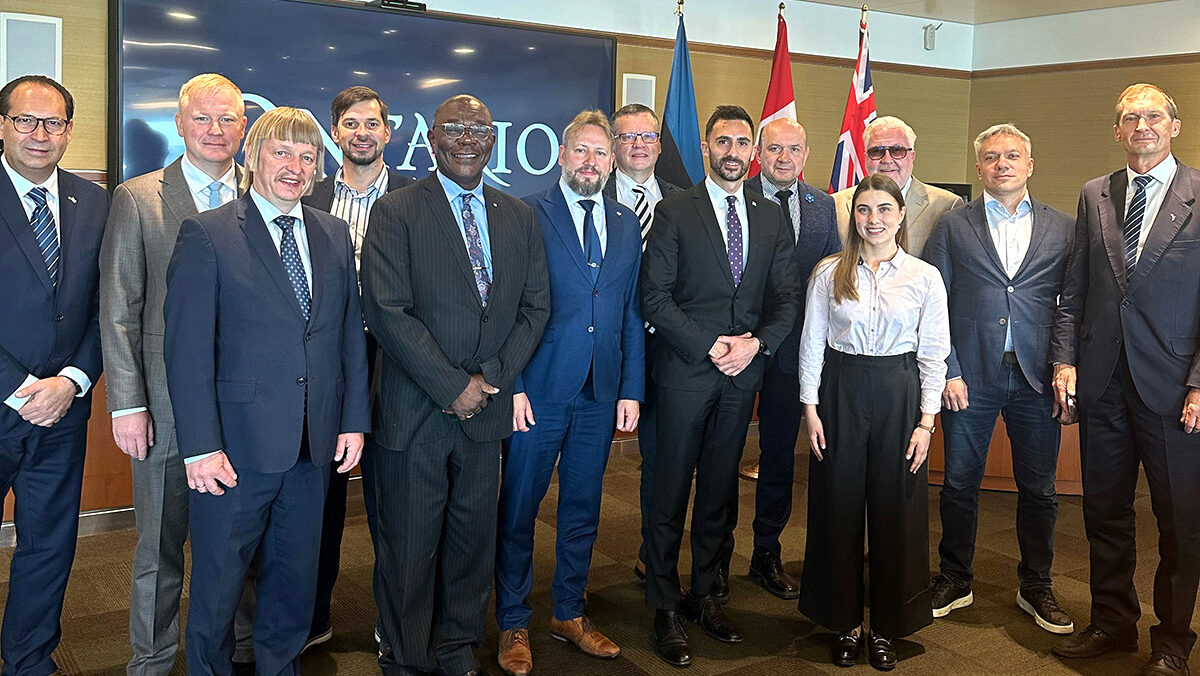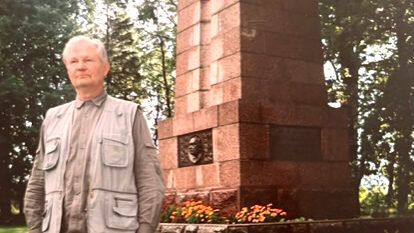Scott Diel (ex-pat American who arrived in Estonia over 20 years ago, author, journalist, perfectly fluent in Estonian) says that enlargement of the Estonians population is a universally accepted concept in the country. But it doesn't take under consideration the thousands that make up the diaspora. They “aren't wanted”. Diel says that they haven't “suffered enough” and that is sufficient not to be considered a “true” Estonian. Some of the conference participants took this to be in humour. Diel believes that one needs to be a fifth generation Estonian to be a “real” Estonian. In the USA it takes only five minutes.
Diel added that if Estonia wants to increase its population size through immigration, then one must have a welcoming attitude towards newcomers. Diel is convinced that even though immigrants don't consider themselves to be Estonian, don't have Estonian citizenship, as long as they pay their taxes and feel satisfied in Estonia, that's enough to make them happy.
Mart Nutt (moderator of the panel, parliamentarian, essayist, journalist) stated that even if the local community wishes the immigrant to be happy in his new country, the cultural environment would still feel strange to him. He would feel at home only if his social and cultural surroundings were similar to the ones he had left.
Linguist Mart Rannut wanted to define what is meant by a “true” Estonian.. “It's asked, what is a duck. A duck is one that looks, acts and quacks like a duck. There aren't many that look like the average duck. But one doesn't need to look like a duck to act like one.” Assimilation means more than just speaking the language. The indigenous host must be open, accepting, providing insight into the culture and how people behave. “The adoption of another culture does not mean the abandonment of one's own. One must differentiate between those immigrants who have their own culture and those whose culture is “insufficient”. Practical aspects of cultural integration include accepting national holidays and lifestyle as one's own.” Integration also needs common ground in values, emotions, an understanding of that which is accepted and tolerated behaviour.
Hvostov related that many teachers have told him about children in elite schools in Tallinn who have pure Estonian names like Arno Tali or Teele Raja (names of characters in the literary classics of Oskar Luts) whose parents don't speak a word of Estonian. Hostov suggests these are non-Estonians ‘masquerading' as Estonians.
While the panel acknowledged that part of a person's self-identity are not only the cultural aspects of everyday life, it also includes the historical landmarks of one's ethnic roots. But to help the development of an Estonian identity, Hvostov isn't convinced that the teaching of hundred's of years of foreign domination and the accompanying serfdom will help. “Some things should not be the subject of discussion like history and religion. They simply must be learned. It's a fact in certain families, that some topics are taboo and if opened, the porcelain hits the wall.”
While the IRL symposium was held in the spirit of exploring better ways of integrating Russian speaking and Estonian speaking communities, brand new research shows that the process of integration is not progressing. Tartu University's journal, Demographic Research has clearly indicated that the two communities are physically relocating so as to increase their segregation from each other. The research deserves closer than his article can offer. However, some critics have already commented that the study confirms the fact that the Russian speaking, Centre Party members of parliament (all decision makers in the Kremlin's eyes), who constantly reiterate Moscow' opinions, have played an influential role in hindering national unity and integration. It's of utmost importance to Russia that the Russian and Estonian speaking communities remain divided.
Laas Leivat



